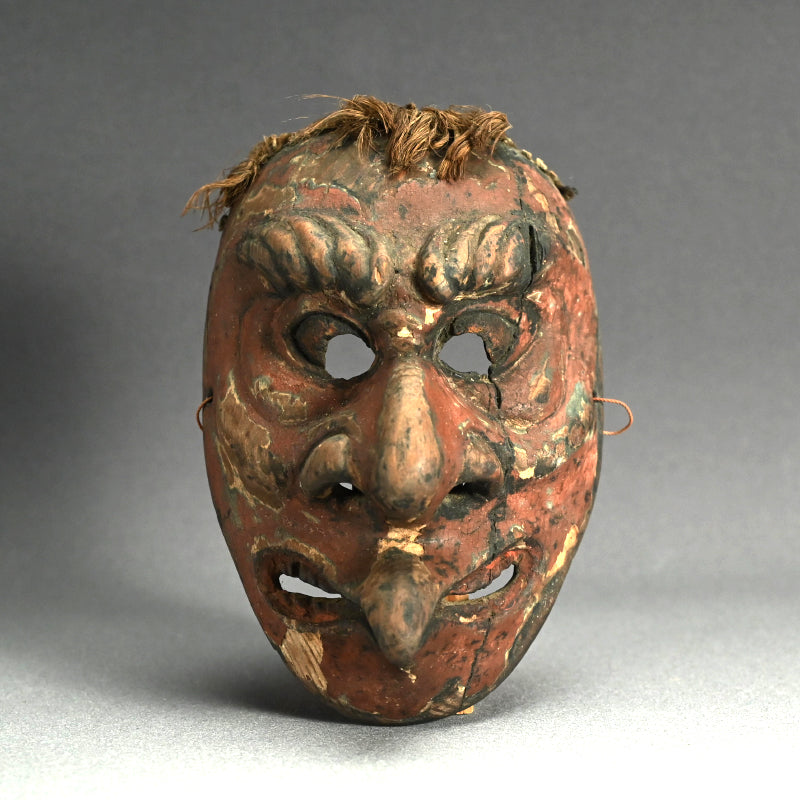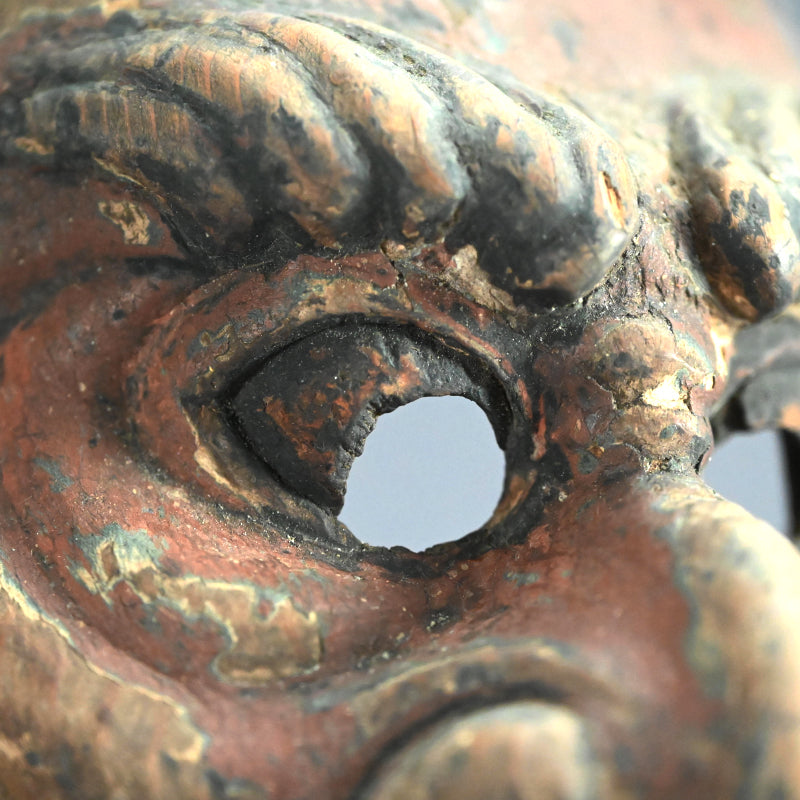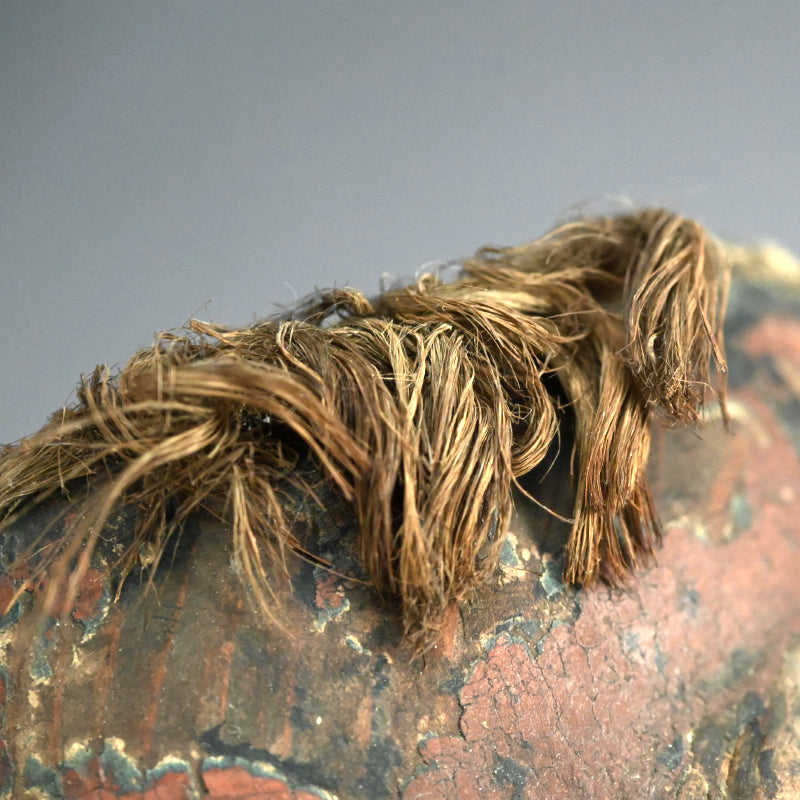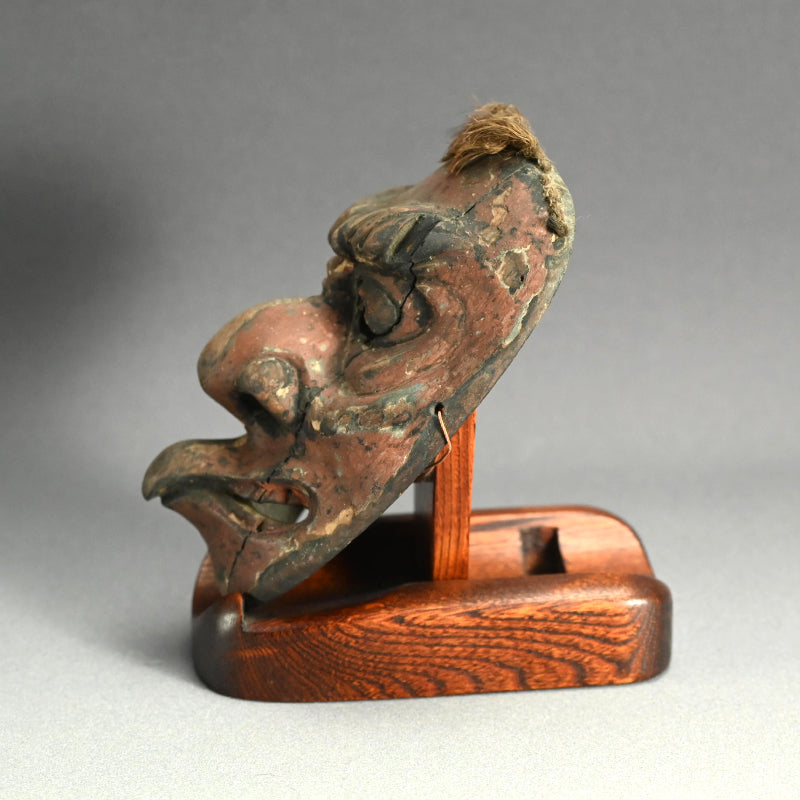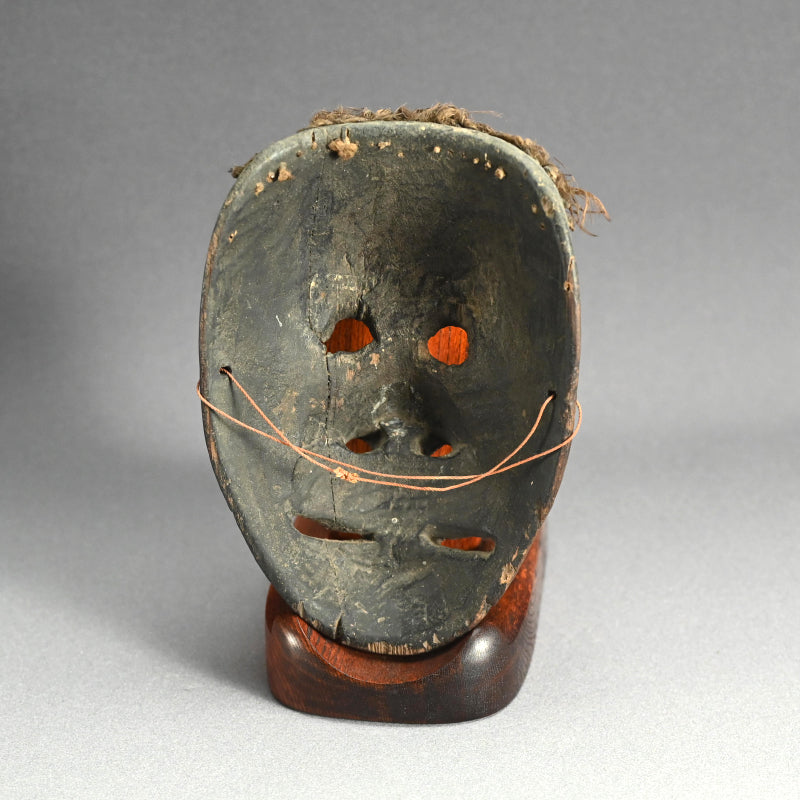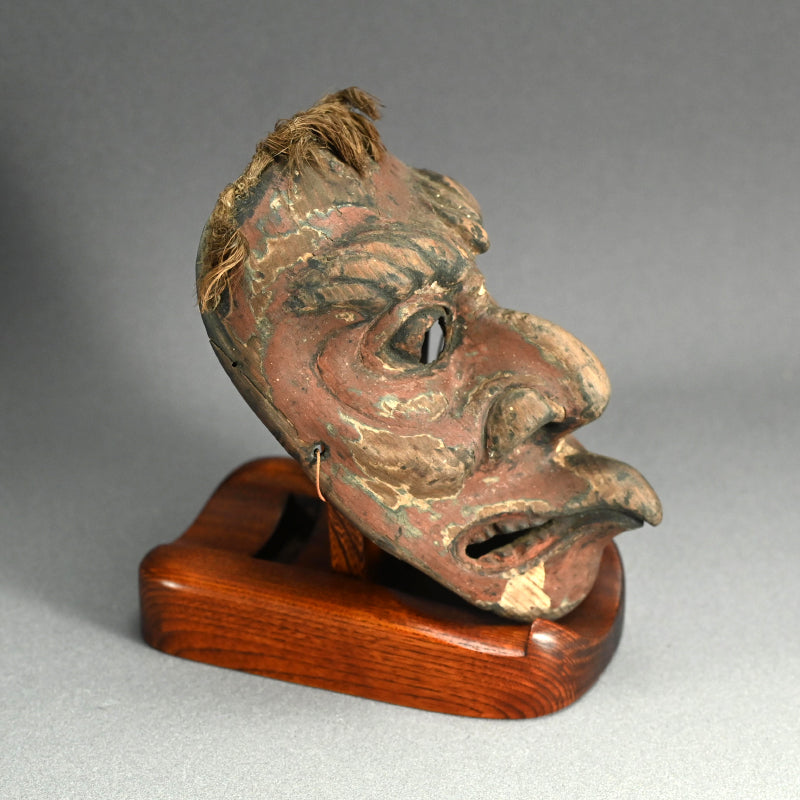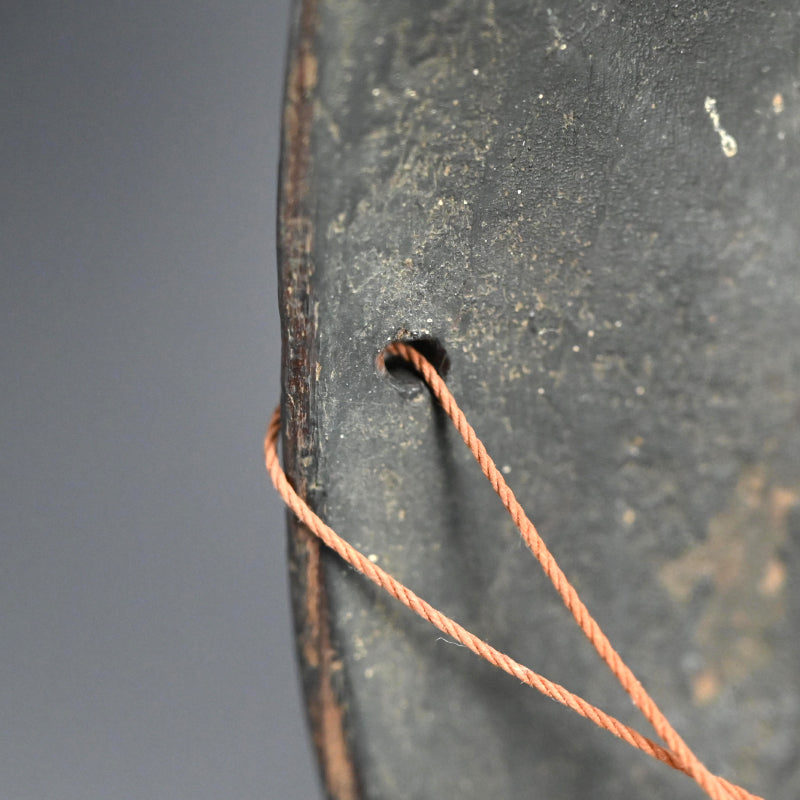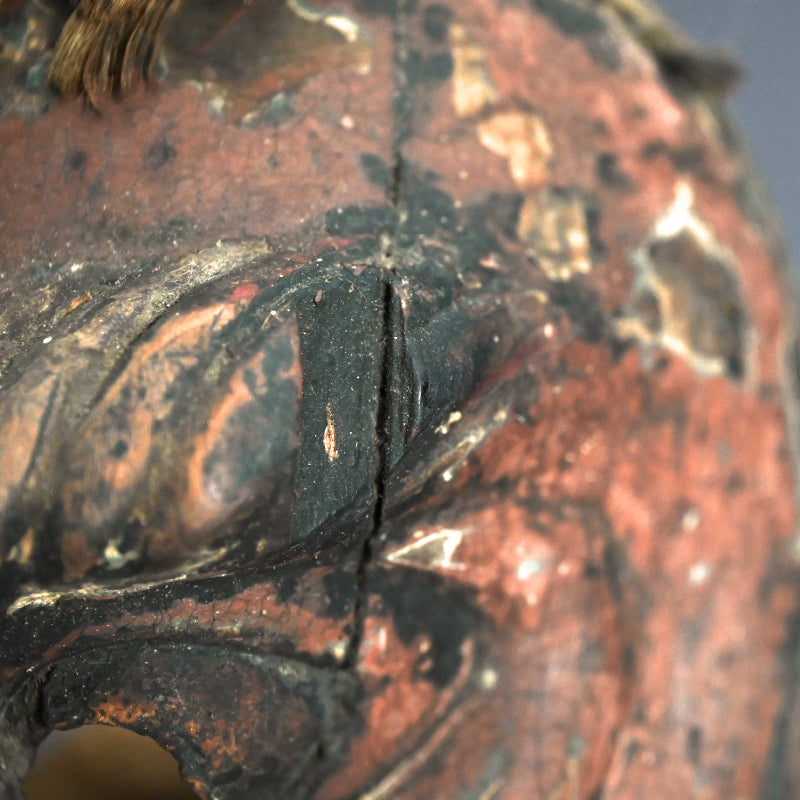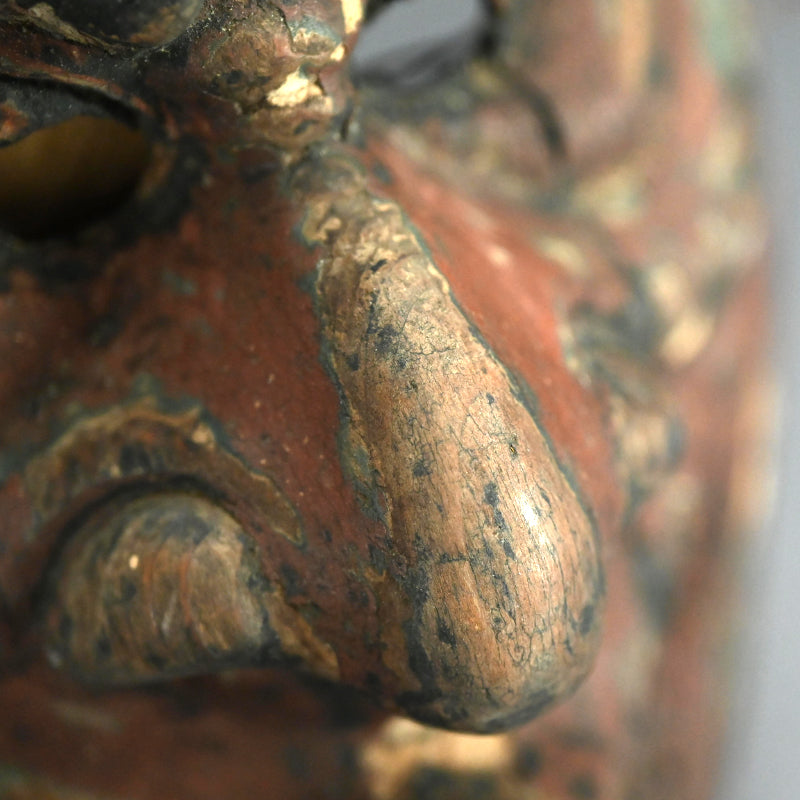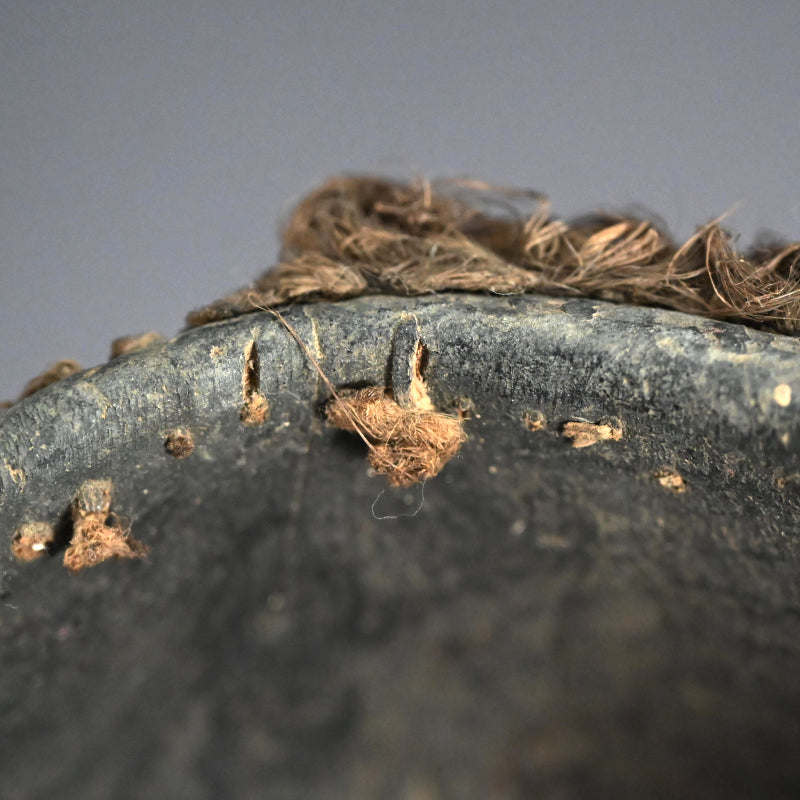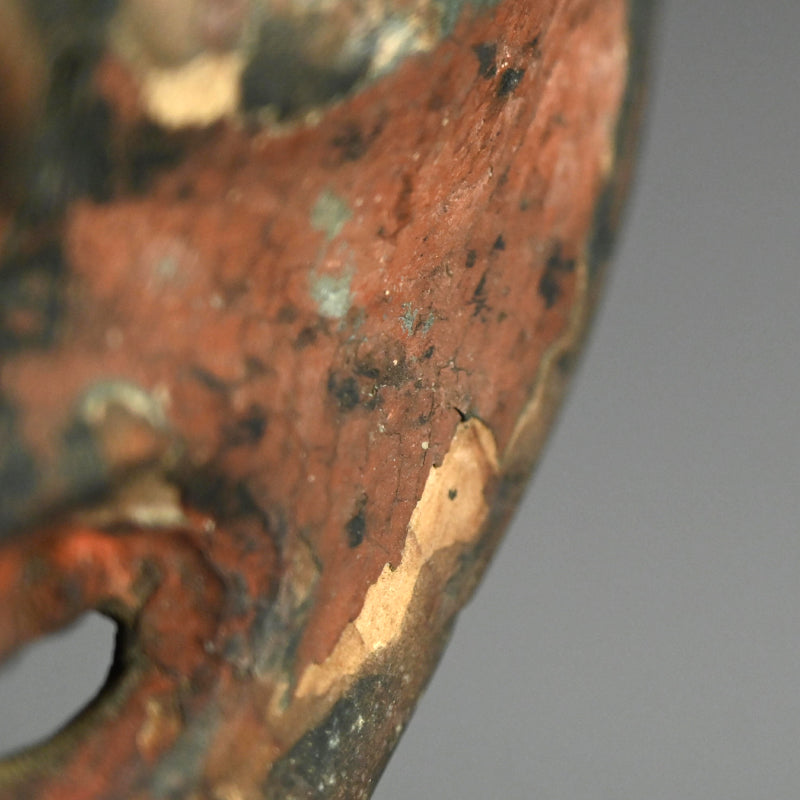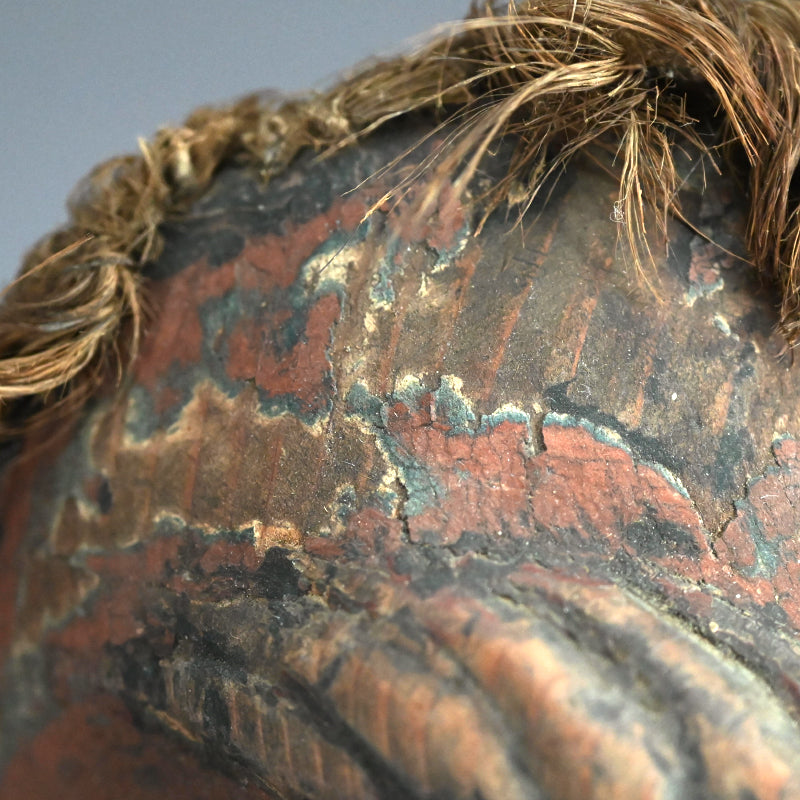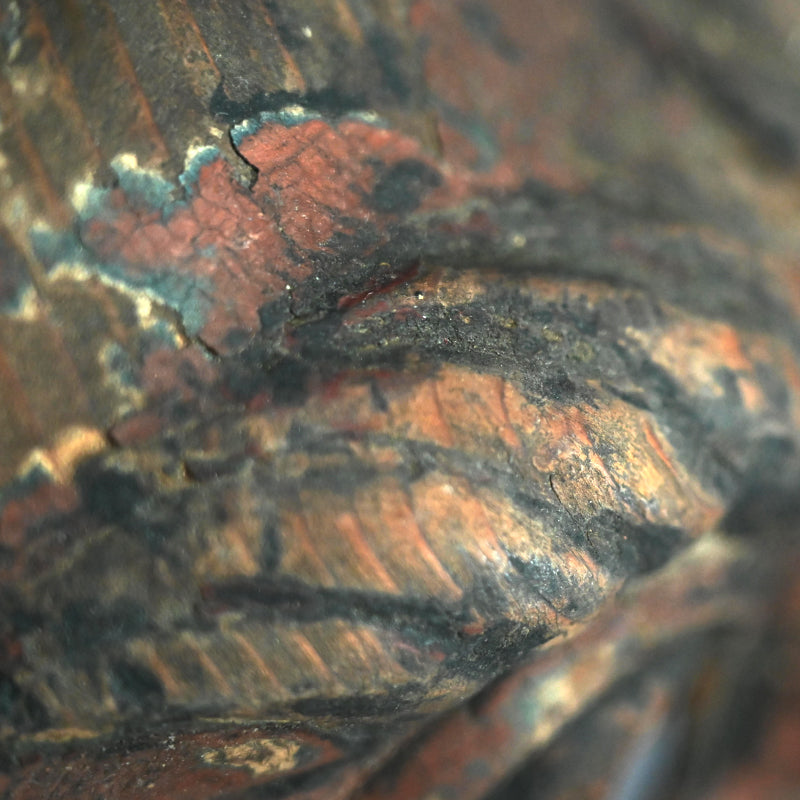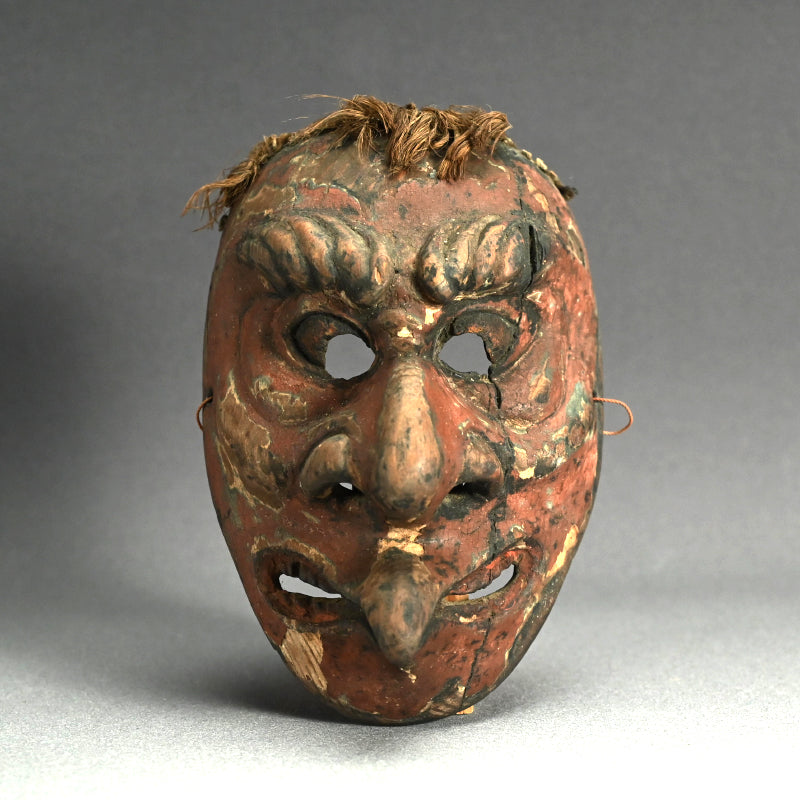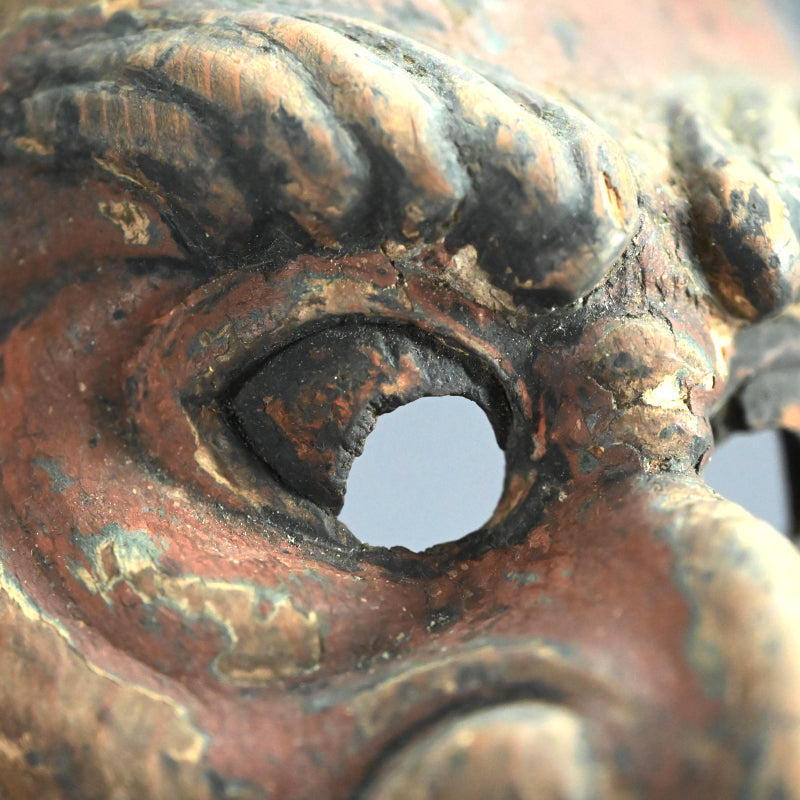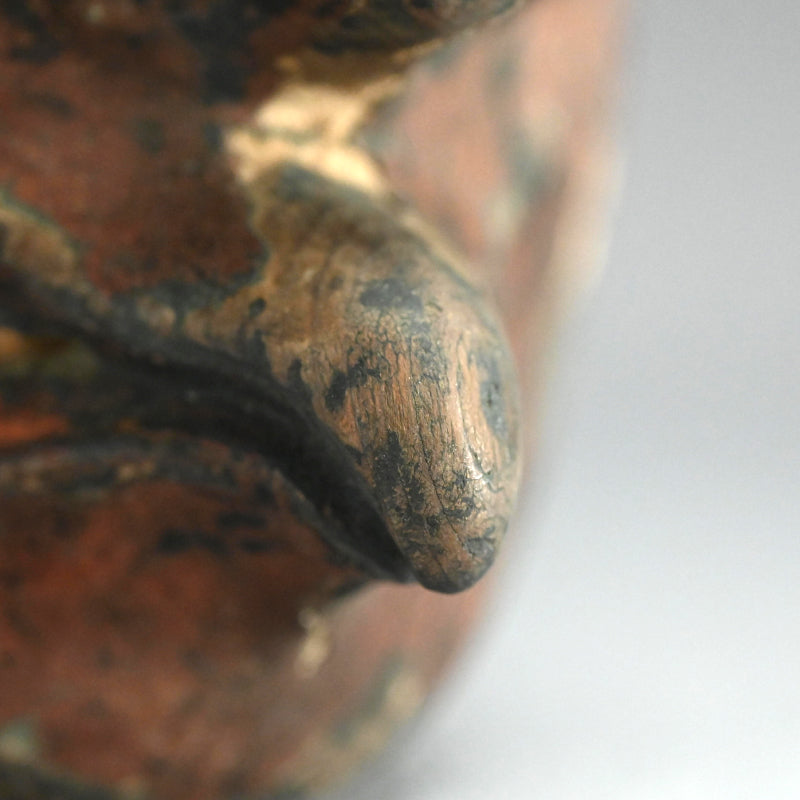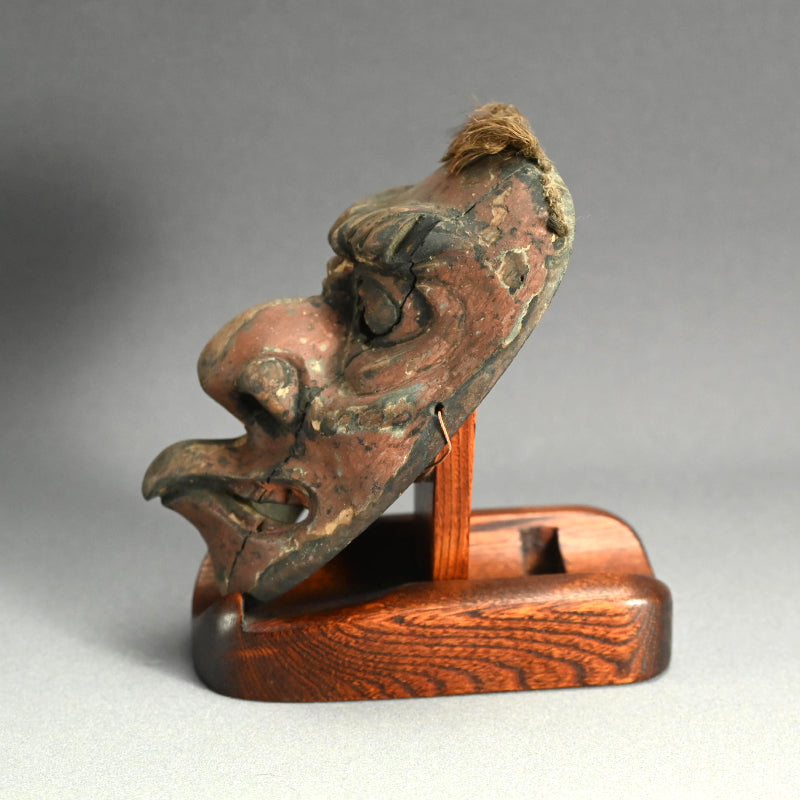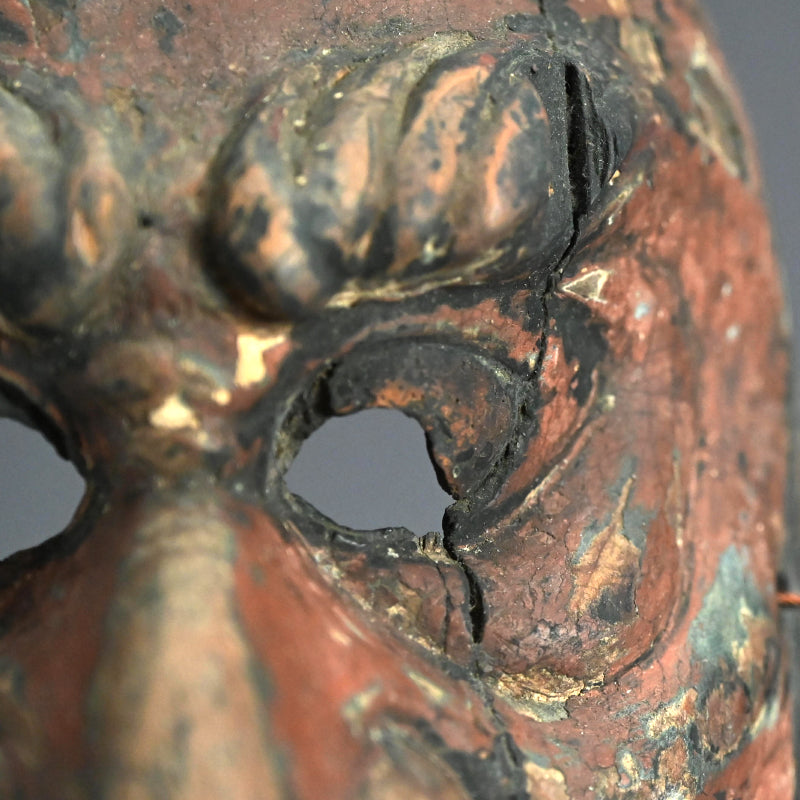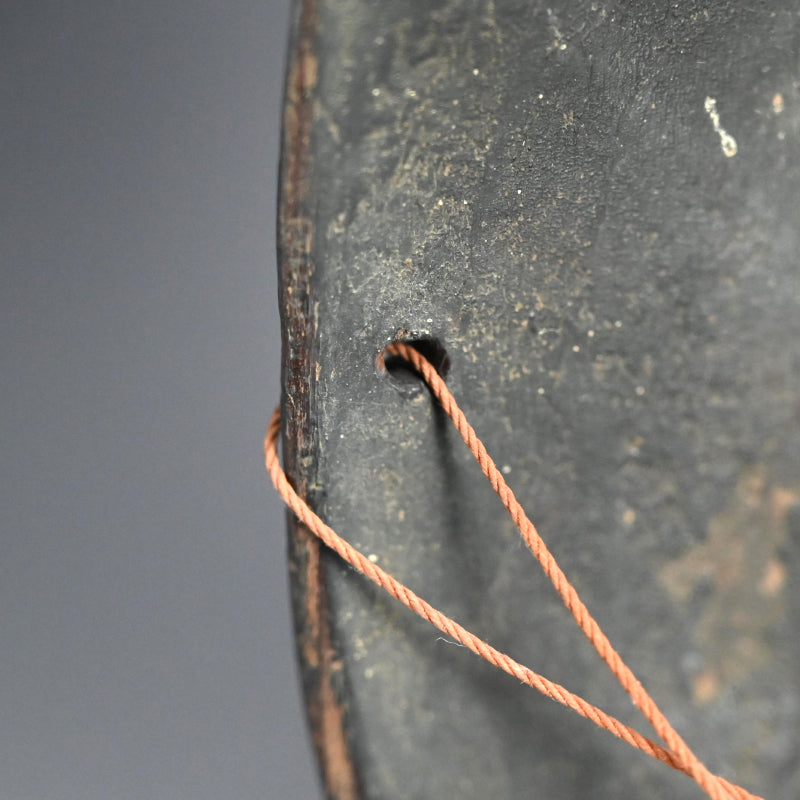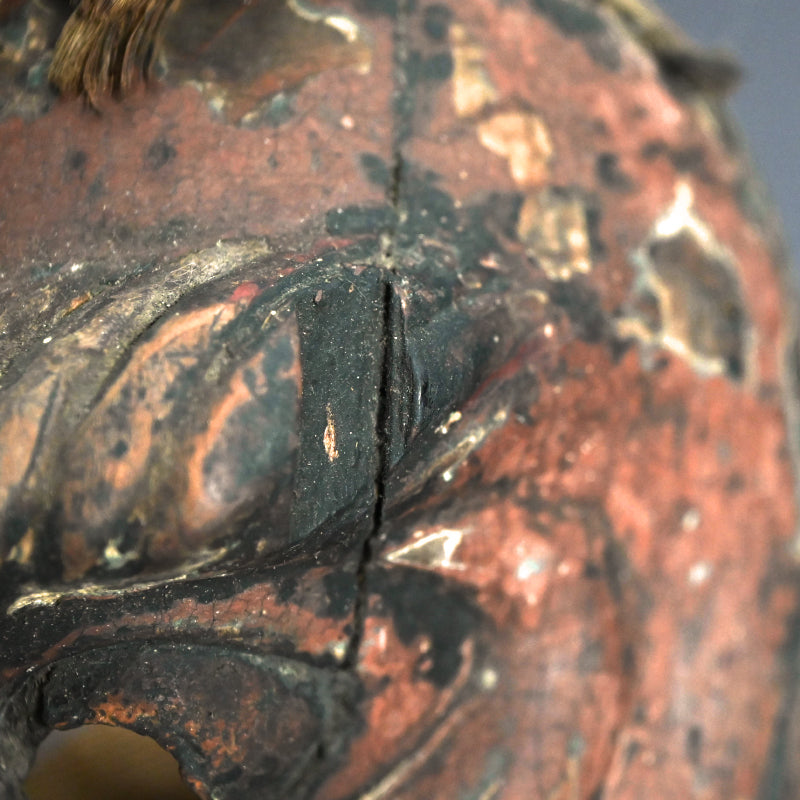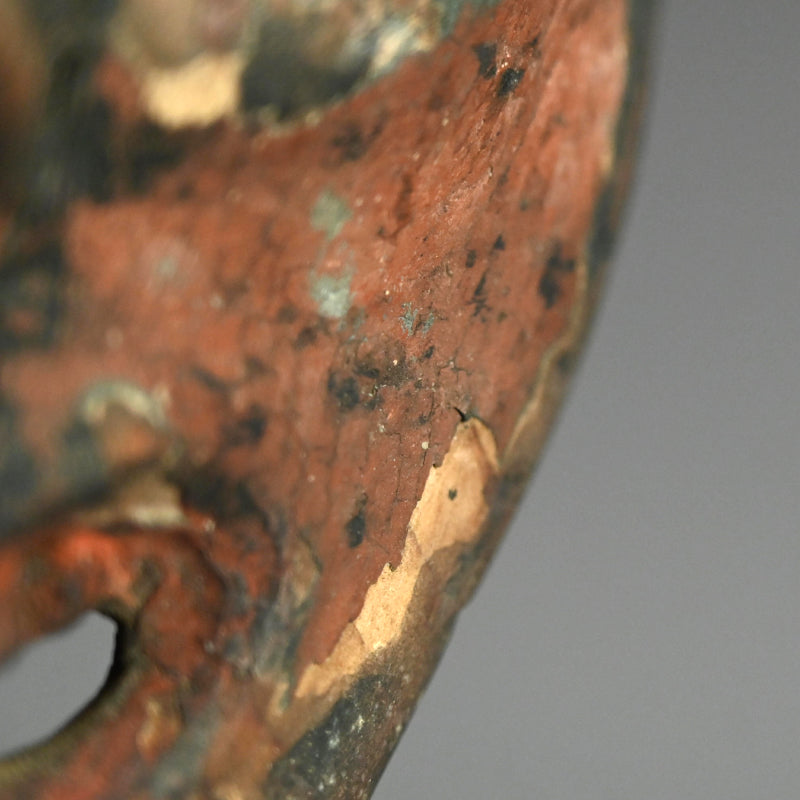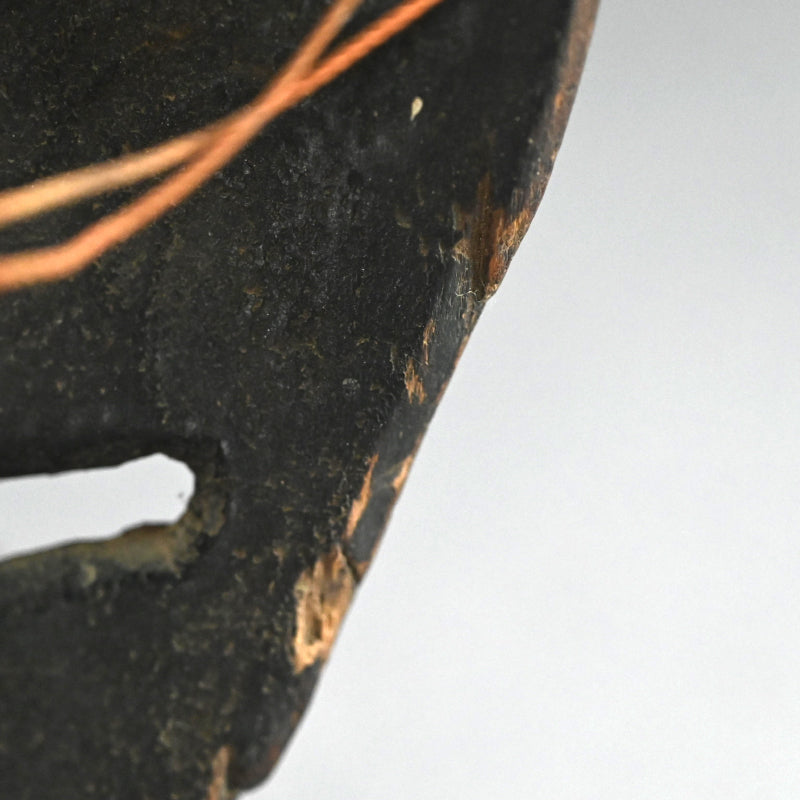Ancient Wooden Tengu Mask, Kamakura to Muromachi period
Ancient Wooden Tengu Mask, Kamakura to Muromachi period
Item Code: K855
Couldn't load pickup availability
Karasu Tengu Demon Mask dating from the Kamakura to Muromachi period carved of wood covered in polychrome red and black with outrageous features and curly hair. This image of a bird-beaked Tengu with furled brows, bulging eyes an oversized nose was carved between the 12th and 14th centuries. The overall carving style and coloration including chisel marks on the back are consistent with the dating and the close set irises of the eyes, looking downward, is a feature of this early era. The mask is 21.5 x 14.5 x 8 cm (8-1/2 x 5-3/4 x 3 inches). It has been broken and re-attached down the left side of the face. It comes in an old kiri-wood storage box.
The art of the mask in Japan is inseparable from its rich ritual and theatrical traditions, tracing a continuous thread from early times to the codification of Noh theatre in the Momoyama era. Japanese masks were not merely decorative; they embodied spiritual, social, and performative functions, serving as conduits between the human and supernatural realms, and as instruments of communal expression.
The earliest extant masked performances are Gigaku (7th–8th centuries), imported from continental Asia during the Asuka and Nara periods. These processional dances, performed at temples and court ceremonies, were largely silent and highly stylized, with masks representing foreign envoys, fierce guardians, animals, and comic figures. Gigaku masks were monumental in scale and striking in their exaggerated features, establishing a precedent for carved wooden masks as a central medium in Japanese performance. Although the tradition waned by the Heian period, its formal vocabulary and sculptural sensibility influenced subsequent masked arts.
Bugaku, flourishing from the Heian period onward, represents the elegant counterpart to Gigaku. Performed at the imperial court and major shrines, Bugaku drew upon Chinese and Korean models while developing a distinct Japanese aesthetic. Its masks—depicting warriors, divine beings, dragons, and foreign dignitaries—were designed to convey dignity and ritual precision. Here, the mask functioned not only as a theatrical device but as a marker of aristocratic ceremonial culture, codifying gesture, costume, and narrative into a visual whole.
Alongside courtly forms, masks played a vital role in agrarian and religious rituals. Dengaku, originating as fertility dances in the countryside during the Heian period, gradually entered urban and temple contexts. Masks in Dengaku were comparatively informal, representing villagers, comic figures, and occasionally deities, reflecting the improvisatory and communal character of the performances. Similarly, Gyōdō, or ritual processions, employed masks to manifest Buddhist cosmology: Niō guardians, Bodhisattvas, and other protective figures were worn to dramatize spiritual narratives and invoke sacred presence, particularly in temple parades or consecration ceremonies.
The practice of ritualized demon-chasing is exemplified in Tsuina, performed during the New Year or on Setsubun, beginning in the Heian period and continuing through the medieval era. Participants, often ritual specialists, wore grotesque oni masks to expel evil and purify space, enacting a symbolic struggle between human and demonic forces. These masks were typically exaggerated in form—featuring snarling mouths, bulging eyes, and prominent horns—and their performance was both a protective rite and a communal spectacle. Tsuina directly informed later folk customs, such as the throwing of beans at oni, preserving the connection between mask, ritual, and social practice.
By the Kamakura and Muromachi periods, these threads converged in the development of Noh theatre. Drawing upon the formal elegance of Bugaku, the spiritual weight of Gyōdō, and the comic or grotesque vitality of Dengaku and Tsuina, Noh codified a repertoire of masks representing human, divine, and demonic characters. Muromachi masks like the Shikami or Ko-beshimi embodied intense emotional and supernatural states, while Momoyama refinements produced a stable set of expressive types, including Tengu and other demon masks used in both ritualized and dramatic contexts. These masks, carved with subtle attention to line and form, became repositories of theatrical tradition, preserving centuries of spiritual and performative knowledge.
Share
